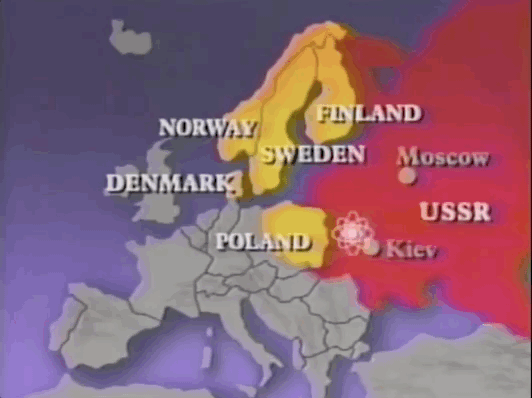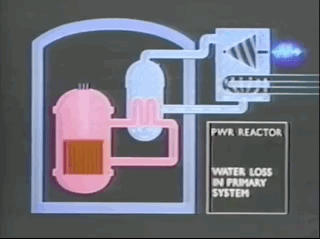On April 26, 1986, a late night safety test at the Chernobyl nuclear plant went horribly wrong and led to the most disastrous nuclear power plant accident in history. The world found out two days later, when Russian state news broadcasted a four-sentence report on the event.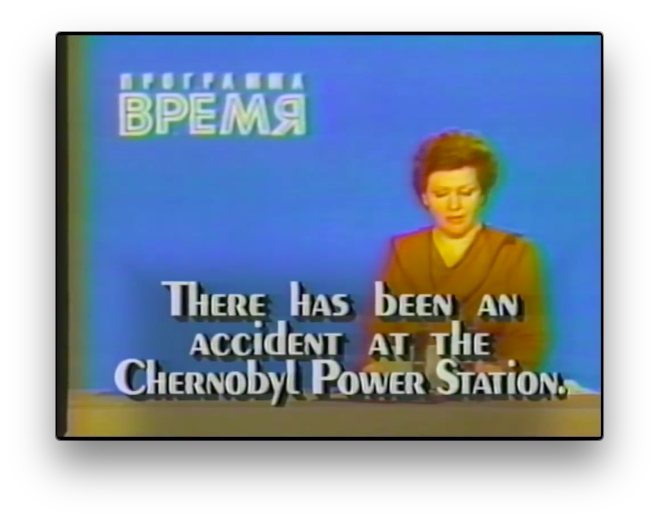 This episode of Nightline, ABC’s late night news program, also aired on the 28th and really articulates two things for me: the straightforward, pundit-light news landscape of the 1980s and the effort that it took to get information in a world, for better or for worse, without the internet and social media.
This episode of Nightline, ABC’s late night news program, also aired on the 28th and really articulates two things for me: the straightforward, pundit-light news landscape of the 1980s and the effort that it took to get information in a world, for better or for worse, without the internet and social media.
 This was it, this was what everyone was worried about with nuclear power, and it was scary. Knowing that something had happened but not exactly what made things even scarier. This report does a great job of managing and exploring that fear, and every question asked and answer received is made with a stiff upper lip pushing back the uncertainty of the situation. Reporting-wise, it’s great; there’s no fear-mongering, it’s level headed, and Koppel does his best to assemble the knowns and the facts. But let’s put all of that aside for a minute and, as trivial as it may seem given the subject matter, dig into the graphic treatment that Nightline gives to this report. Spoiler: it’s perfect.
This was it, this was what everyone was worried about with nuclear power, and it was scary. Knowing that something had happened but not exactly what made things even scarier. This report does a great job of managing and exploring that fear, and every question asked and answer received is made with a stiff upper lip pushing back the uncertainty of the situation. Reporting-wise, it’s great; there’s no fear-mongering, it’s level headed, and Koppel does his best to assemble the knowns and the facts. But let’s put all of that aside for a minute and, as trivial as it may seem given the subject matter, dig into the graphic treatment that Nightline gives to this report. Spoiler: it’s perfect.
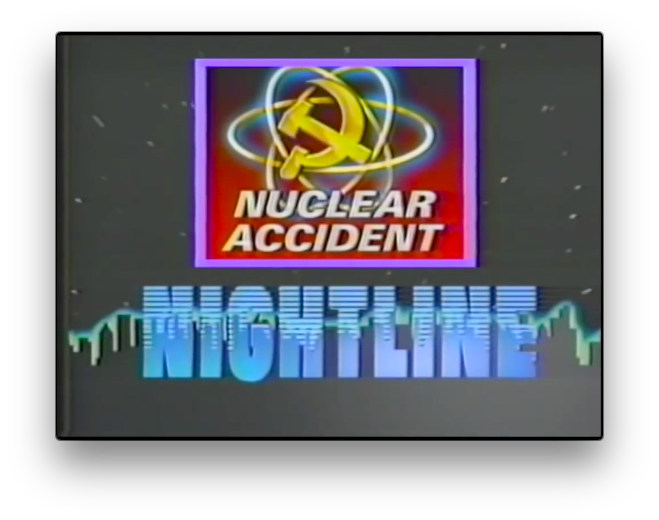 The simple hammer-and-sickle at the nucleus of an atom just about tells the whole story by itself. There are two map looks as the story unfolds. The first broadly demonstrates the airborne radioactive spread into Scandinavia over the past two days.
The simple hammer-and-sickle at the nucleus of an atom just about tells the whole story by itself. There are two map looks as the story unfolds. The first broadly demonstrates the airborne radioactive spread into Scandinavia over the past two days.
The second lays out the plant’s location relative to Kiev’s water supply; this one’s more zoomed in and detailed, almost like a road map. The fonts in both maps are unfortunate, but it’s more flagrantly ugly in this one- presumably limitations of the Chyron technology of the day.
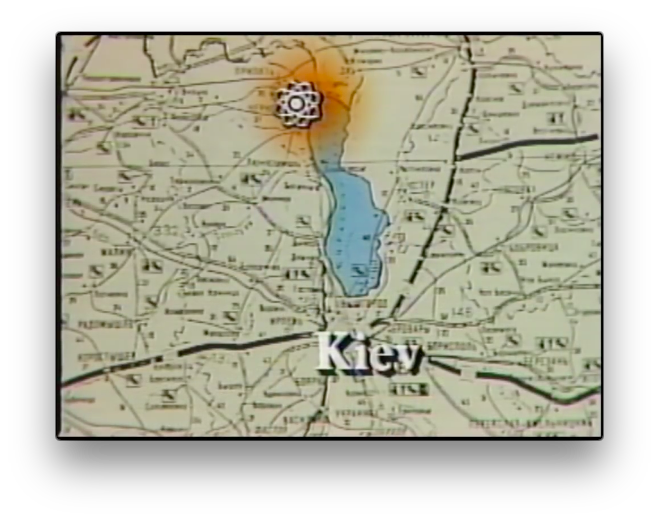 As Koppel speaks to experts to suss out what specifically could have happened at the plant, the motion graphics really kick into gear. This beautiful diagram takes us through the stages of the meltdown process.
As Koppel speaks to experts to suss out what specifically could have happened at the plant, the motion graphics really kick into gear. This beautiful diagram takes us through the stages of the meltdown process.
The potential effects of radiation on the body are laid out as well. There’s more to the report and, if you’re a history buff or a nuclear buff or an ’80s buff, you should really watch the whole thing. This is a singular moment in time, a snapshot of an emotion in the middle of a story that we have the luxury of knowing the outcome of, and it captures the anxiety of the moment really well.
There’s more to the report and, if you’re a history buff or a nuclear buff or an ’80s buff, you should really watch the whole thing. This is a singular moment in time, a snapshot of an emotion in the middle of a story that we have the luxury of knowing the outcome of, and it captures the anxiety of the moment really well.
And don’t forget to get that transcript:
-ds

